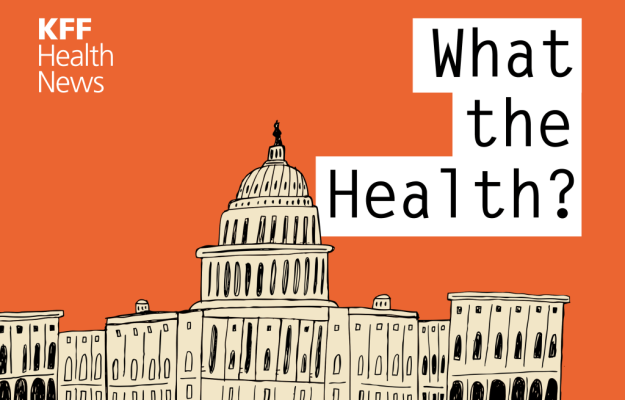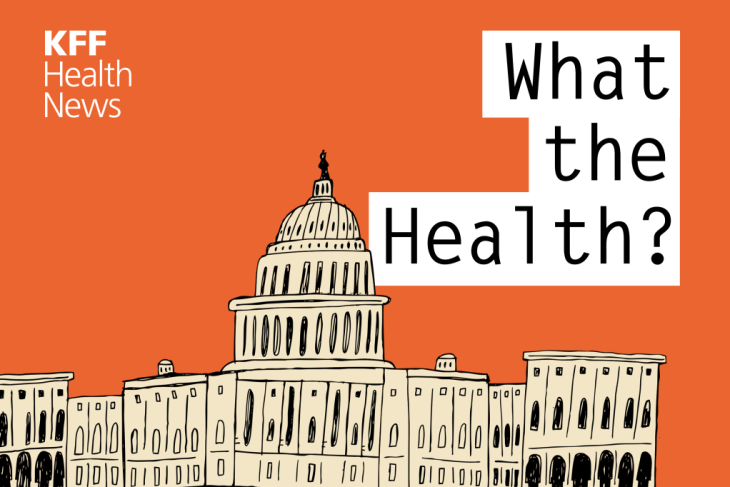
Honey, Sweetie, Dearie: The Perils of Elderspeak
A prime example of elderspeak: Cindy Smith was visiting her father in his assisted living apartment in Roseville, California. An aide who was trying to induce him to do something — Smith no longer remembers exactly what — said, “Let me help you, sweetheart.” “He […]
Pharmaceuticals
Trump Team Faces Key Legal Decision That Could Put Mental Health Parity in Peril
The Trump administration must soon make a decision that will affect millions of Americans’ ability to access and afford mental health and addiction care. The administration is facing a May 12 deadline to declare if it will defend Biden-era regulations that aim to enforce mental […]
Health Care
A California Lawmaker Leans Into Her Medical Training in Fight for Health Safety Net
SACRAMENTO, Calif. — State Sen. Akilah Weber Pierson anticipates that California’s sprawling Medicaid program, known as Medi-Cal, may need to be dialed back after Gov. Gavin Newsom releases his latest budget, which could reflect a multibillion-dollar deficit. Even so, the physician-turned-lawmaker, who was elected to […]
Health Care

Honey, Sweetie, Dearie: The Perils of Elderspeak
A prime example of elderspeak: Cindy Smith was visiting her father in his assisted living apartment in Roseville, California. An aide who was trying to induce him to do something — Smith no longer remembers exactly what — said, “Let me help you, sweetheart.” “He […]
PharmaceuticalsA prime example of elderspeak: Cindy Smith was visiting her father in his assisted living apartment in Roseville, California. An aide who was trying to induce him to do something — Smith no longer remembers exactly what — said, “Let me help you, sweetheart.”
“He just gave her The Look — under his bushy eyebrows — and said, ‘What, are we getting married?’” recalled Smith, who had a good laugh, she said. Her father was then 92, a retired county planner and a World War II veteran; macular degeneration had reduced the quality of his vision, and he used a walker to get around, but he remained cognitively sharp.
“He wouldn’t normally get too frosty with people,” Smith said. “But he did have the sense that he was a grown-up and he wasn’t always treated like one.”
People understand almost intuitively what “elderspeak” means. “It’s communication to older adults that sounds like baby talk,” said Clarissa Shaw, a dementia care researcher at the University of Iowa College of Nursing and a co-author of a recent article that helps researchers document its use.
“It arises from an ageist assumption of frailty, incompetence, and dependence.”
Its elements include inappropriate endearments. “Elderspeak can be controlling, kind of bossy, so to soften that message there’s ‘honey,’ ‘dearie,’ ‘sweetie,’” said Kristine Williams, a nurse gerontologist at the University of Kansas School of Nursing and another co-author of the article.
“We have negative stereotypes of older adults, so we change the way we talk.”
Or caregivers may resort to plural pronouns: Are we ready to take our bath? There, the implication “is that the person’s not able to act as an individual,” Williams said. “Hopefully, I’m not taking the bath with you.”
Sometimes, elderspeakers employ a louder volume, shorter sentences, or simple words intoned slowly. Or they may adopt an exaggerated, singsong vocal quality more suited to preschoolers, along with words like “potty” or “jammies.”
With what are known as tag questions — It’s time for you to eat lunch now, right? — “You’re asking them a question but you’re not letting them respond,” Williams explained. “You’re telling them how to respond.”
Studies in nursing homes show how commonplace such speech is. When Williams, Shaw, and their team analyzed video recordings of 80 interactions between staff and residents with dementia, they found that 84% involved some form of elderspeak.
“Most of elderspeak is well intended. People are trying to show they care,” Williams said. “They don’t realize the negative messages that come through.”
For example, among nursing home residents with dementia, studies have found a relationship between exposure to elderspeak and behaviors collectively known as resistance to care.
“People can turn away or cry or say no,” Williams explained. “They may clench their mouths shut when you’re trying to feed them.” Sometimes, they push caregivers away or strike them.
She and her team developed a training program called CHAT, for Changing Talk: three hourlong sessions that include videos of communication between staff members and patients, intended to reduce elderspeak.
It worked. Before the training, in 13 nursing homes in Kansas and Missouri, almost 35% of the time spent in interactions consisted of elderspeak; that share dropped to about 20% afterward.
Furthermore, resistant behaviors accounted for almost 36% of the time spent in encounters; after training, that proportion fell to about 20%.
A study conducted in a Midwestern hospital, again among patients with dementia, found the same sort of decline in resistance behavior.
What’s more, CHAT training in nursing homes was associated with lower use of antipsychotic drugs. Though the results did not reach statistical significance, due in part to the small sample size, the research team deemed them “clinically significant.”
“Many of these medications have a black box warning from the FDA,” Williams said of the drugs. “It’s risky to use them in frail, older adults” because of their side effects.
Now, Williams, Shaw, and their colleagues have streamlined the CHAT training and adapted it for online use. They are examining its effects in about 200 nursing homes nationwide.
Even without formal training programs, individuals and institutions can combat elderspeak. Kathleen Carmody, owner of Senior Matters Home Health Care and Consulting in Columbus, Ohio, cautions her aides to address clients as Mr. or Mrs. or Ms., “unless or until they say, ‘Please call me Betty.’”
In long-term care, however, families and residents may worry that correcting the way staff members speak could create antagonism.
A few years ago, Carol Fahy was fuming about the way aides at an assisted living facility in suburban Cleveland treated her mother, who was blind and had become increasingly dependent in her 80s.
Calling her “sweetie” and “honey babe,” the staff “would hover and coo, and they put her hair up in two pigtails on top of her head, like you would with a toddler,” said Fahy, a psychologist in Kaneohe, Hawaii.
Although she recognized the aides’ agreeable intentions, “there’s a falseness about it,” she said. “It doesn’t make someone feel good. It’s actually alienating.”
Fahy considered discussing her objections with the aides, but “I didn’t want them to retaliate.” Eventually, for several reasons, she moved her mother to another facility.
Yet objecting to elderspeak need not become adversarial, Shaw said. Residents and patients — and people who encounter elderspeak elsewhere, because it’s hardly limited to health care settings — can politely explain how they prefer to be spoken to and what they want to be called.
Cultural differences also come into play. Felipe Agudelo, who teaches health communications at Boston University, pointed out that in certain contexts a diminutive or term of endearment “doesn’t come from underestimating your intellectual ability. It’s a term of affection.”
He emigrated from Colombia, where his 80-year-old mother takes no offense when a doctor or health care worker asks her to “tómese la pastillita” (take this little pill) or “mueva la manito” (move the little hand).
That’s customary, and “she feels she’s talking to someone who cares,” Agudelo said.
“Come to a place of negotiation,” he advised. “It doesn’t have to be challenging. The patient has the right to say, ‘I don’t like your talking to me that way.’”
In return, the worker “should acknowledge that the recipient may not come from the same cultural background,” he said. That person can respond, “This is the way I usually talk, but I can change it.”
Lisa Greim, 65, a retired writer in Arvada, Colorado, pushed back against elderspeak recently when she enrolled in Medicare drug coverage.
Suddenly, she recounted in an email, a mail-order pharmacy began calling almost daily because she hadn’t filled a prescription as expected.
These “gently condescending” callers, apparently reading from a script, all said, “It’s hard to remember to take our meds, isn’t it?” — as if they were swallowing pills together with Greim.
Annoyed by their presumption, and their follow-up question about how frequently she forgot her medications, Greim informed them that having stocked up earlier, she had a sufficient supply, thanks. She would reorder when she needed more.
Then, “I asked them to stop calling,” she said. “And they did.”
The New Old Age is produced through a partnership with The New York Times.
KFF Health News is a national newsroom that produces in-depth journalism about health issues and is one of the core operating programs at KFF—an independent source of health policy research, polling, and journalism. Learn more about KFF.
USE OUR CONTENT
This story can be republished for free (details).

Trump Team Faces Key Legal Decision That Could Put Mental Health Parity in Peril
The Trump administration must soon make a decision that will affect millions of Americans’ ability to access and afford mental health and addiction care. The administration is facing a May 12 deadline to declare if it will defend Biden-era regulations that aim to enforce mental […]
Health CareThe Trump administration must soon make a decision that will affect millions of Americans’ ability to access and afford mental health and addiction care.
The administration is facing a May 12 deadline to declare if it will defend Biden-era regulations that aim to enforce mental health parity — the idea that insurers must cover mental illness and addiction treatment comparably to physical treatments for ailments such as cancer or high blood pressure.
Although a federal parity law has been on the books since 2008, the regulations in question were issued last September. They represent the latest development in a nearly two-decade push by advocates, regulators, and lawmakers to ensure insurance plans cover mental health care equitably to physical health care.
Within the dense 166-page final rule, two provisions have garnered particular attention: first, that insurers provide “meaningful benefits” — as defined by independent medical standards — for covered mental health conditions if they do so for physical conditions. For example, if insurers cover screening and insulin treatment for diabetes, then they can’t cover screening alone for opioid addiction; they must also cover medications to treat opioid use disorder.
Second, insurers must go beyond the written words of their policies to measure how they work in practice. For example, are patients having to seek out-of-network care more often for mental than physical care? If so, and it relates to an insurer’s policies, then those policies must be adjusted.
In January, a trade association representing about 100 large employers sued the federal government, claiming the regulations overstepped the administration’s authority, would increase costs, and risked reducing the quality of care. The ERISA Industry Committee represents several Fortune 500 companies, such as PepsiCo and Comcast, which sponsor health insurance plans for their employees and would be directly affected by the new regulations.
ERIC’s lawsuit, filed days before President Donald Trump’s inauguration, puts the onus on the new administration to decide whether to defend the regulations. If it chooses not to, the rules could be scrapped.
Mental health clinicians, patients, and advocates are urging the administration to fight back.
“What we’re trying to do is make the spirit of parity a practical reality,” said Patrick Kennedy, a Democratic former U.S. representative who sponsored the 2008 parity law in the House and co-founded the Kennedy Forum, which advocates on mental health issues. This is “an existential issue for the country, public health, for every aspect of our society.”
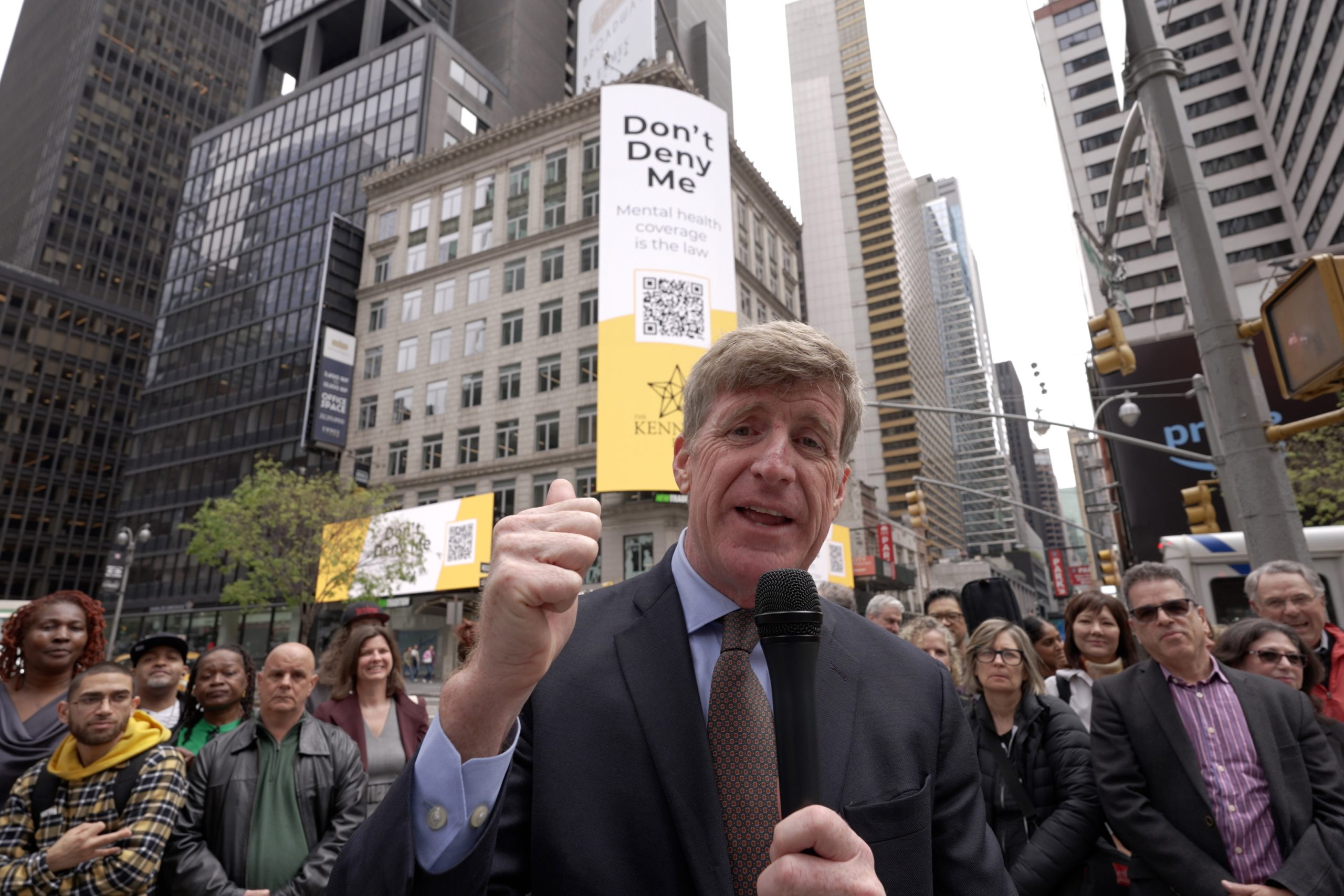
A 2023 national survey found that more than 6 million adults with mental illness who wanted treatment in the past year were unable to receive it. Cost was one of the most common barriers.
This lack of treatment harms people’s physical health too, with research suggesting that undertreating depression can complicate chronic conditions, such as diabetes.
Kennedy hopes that connection will prompt support from the Trump administration, which has made chronic disease a central focus of its “Make America Healthy Again” agenda.
“You’re never going to get MAHA if you don’t integrate mental health,” Kennedy said, mentioning the broad health movement embraced by his cousin HHS Secretary Robert F. Kennedy Jr.
But James Gelfand, president and CEO of ERIC, said the regulations are a misguided attempt to solve the nation’s mental health care crisis.
People’s difficulty accessing therapy or medication has less to do with insurance policy and more to do with a severe shortage of mental health care providers, he said, adding, “No amount of penalties on employers” or new parity regulations “is going to change that dynamic until we get more of these providers.”
This point is at the heart of debate about parity issues. Is mental health care difficult to access because there are few providers, or are providers not accepting insurance because of low reimbursement rates? A recent study by the research institute RTI International suggests it has more to do with payment.
The departments of Justice, Labor, and Health and Human Services declined to comment for this article. The Treasury Department, which is also involved in the lawsuit, did not respond to requests for comment.
‘They Bank on You Just Giving Up’
Psychiatric nurse practitioner Gabrielle Abelard employs about 40 clinicians in her therapy practice, which serves about 2,500 clients across Massachusetts each year.
One of the programs she’s most proud to offer is intensive in-home therapy for children with serious behavioral challenges, such as intergenerational trauma, aggressive outbursts, and self-harm. Two clinicians visit the child’s home over months and work with the family, the child’s doctors, and school staff.
“A big part of the work being done is helping to keep children in school, helping to keep them out of the hospital and even out of jail,” Abelard said.
But insurance barriers sometimes hinder the services.
Abelard’s staff has to obtain prior authorization from insurers before they can provide care. Then they have to reapply for authorization every two, three, or six months, depending on the insurer. When that reauthorization is delayed, Abelard faces a dilemma: continue seeing clients knowing insurers may not pay for those services or leave clients without care until the reauthorization comes through.
Continuing services has cost her tens of thousands of dollars, she said, and months of bureaucratic hurdles to obtain back payments from insurers.
“They bank on you just giving up,” she said.
A goal of the landmark 2008 Mental Health Parity and Addiction Equity Act was to decrease dilemmas such as Abelard’s.
But the bipartisan law primarily emphasized easy-to-measure treatment limits, saying insurers could not impose higher deductibles or copays for mental health care than they did for physical health care. What received less attention was how insurers should handle other limitations, such as prior authorization or fail-first requirements for patients to try certain therapies before they would be eligible for others.
As a result, true parity remained elusive, said Deborah Steinberg, a senior health policy attorney at the nonprofit Legal Action Center.
In 2020, Congress tried to address this through a new law, signed by Trump in his first term. The law required insurance plans to systematically analyze differences in certain treatment limitations for mental and physical health care and submit those analyses upon request to states and the federal governments.
As the federal government reviewed some of those analyses, it discovered numerous parity violations. In a 2022 report, it detailed how some insurance plans covered nutritional counseling for diabetes, but not for anorexia or bulimia. Another plan required precertification for all outpatient mental health and addiction services but only for a select few outpatient medical and surgical services.
The regulations issued in September aimed to provide insurers more guidance on the 2020 law and close loopholes that allowed such disparities, Steinberg said.
‘Supply Is the Biggest Problem’
One of the biggest changes in the new regulations was the focus on outcomes, such as how often patients go out of network for mental versus physical care.
Steinberg called the provision “a really important change.” But Gelfand, president of the employer association suing to stop the regulations, said it ignores the complexity of mental health care.
Many factors outside employers’ and insurers’ control affect how often a patient goes out of network, he said, including the availability of providers in the area, regional variations in clinical practices, and the patient’s personal preference.
Mental health clinicians know there’s high demand for their services, so they have a lot of market power. That “is creating the bad behavior from these providers,” Gelfand said, such as refusing to accept insurance and not submitting out-of-network bills on clients’ behalf.
“Supply is the biggest problem,” Gelfand said.
However, the RTI International study challenged that premise, with the authors noting that primary care physicians are in shorter supply than behavioral health providers yet have much lower out-of-network use.
The authors point to insurance reimbursements as the culprit instead. The study found that insurance reimbursements for behavioral health visits are, on average, 22% lower than for medical or surgical office visits. The low pay creates a disincentive for psychologists and psychiatrists to join insurance networks.
But the fix may not be as easy as raising reimbursement rates. Companies are already paying increasingly high premiums for employees’ health insurance and many are concerned about sustaining these benefits.
ERIC has championed other strategies, such as reforming medical education and residency programs to produce more mental health care providers, increasing telehealth services, and training primary care doctors to address basic mental health concerns. The organization often lobbies state and federal lawmakers, writes letters to regulatory agencies, and testifies before Congress on these issues.
Narrowly focusing on insurance regulations could have unintended consequences, Gelfand said. Increased costs for health plans may get passed on to consumers. Or, in an attempt to keep costs down, insurers may narrow the size of their physical health care networks to match the mental health ones. In a worst-case scenario, employers could stop providing mental health benefits altogether.
Advocates say that’s unlikely, since many employees have come to expect this type of coverage, and employers recognize that providing mental health benefits can increase worker productivity and retention.
Patrick Kennedy also pointed to the bigger picture around these issues: If people do not have insurance coverage for mental health care, they’re more likely to end up in crisis at the hospital or in the criminal justice system, he said. Their children may be sent to foster care. Taxpayers finance those systems.
“We all end up picking up the tab for not enforcing parity,” he said.
But what calculation the Trump administration makes — and whether it defends or drops the new regulations — remains to be seen.
KFF Health News is a national newsroom that produces in-depth journalism about health issues and is one of the core operating programs at KFF—an independent source of health policy research, polling, and journalism. Learn more about KFF.
USE OUR CONTENT
This story can be republished for free (details).

A California Lawmaker Leans Into Her Medical Training in Fight for Health Safety Net
SACRAMENTO, Calif. — State Sen. Akilah Weber Pierson anticipates that California’s sprawling Medicaid program, known as Medi-Cal, may need to be dialed back after Gov. Gavin Newsom releases his latest budget, which could reflect a multibillion-dollar deficit. Even so, the physician-turned-lawmaker, who was elected to […]
Health CareSACRAMENTO, Calif. — State Sen. Akilah Weber Pierson anticipates that California’s sprawling Medicaid program, known as Medi-Cal, may need to be dialed back after Gov. Gavin Newsom releases his latest budget, which could reflect a multibillion-dollar deficit.
Even so, the physician-turned-lawmaker, who was elected to the state Senate in November, says her priorities as chair of a budget health subcommittee include preserving coverage for the state’s most vulnerable, particularly children and people with chronic health conditions.
“We will be spending many, many hours and long nights figuring this out,” Weber Pierson said of the lead-up to the state’s June 15 deadline for lawmakers to pass a balanced budget.
With Medicaid cuts on the table in Washington and Medi-Cal running billions of dollars over budget due to rising drug prices and higher-than-anticipated costs to cover immigrants without legal status, Weber Pierson’s dual responsibilities — maintaining a balanced budget and delivering compassionate care to the state’s poorest residents — could make her instrumental in leading Democrats through this period of uncertainty.
President Donald Trump has said GOP efforts to cut federal spending will not touch Medicaid beyond “waste, fraud, and abuse.” Congressional Republicans are considering going after states such as California that extend coverage to immigrants without legal status and imposing restrictions on provider taxes. California voters in November made permanent the state’s tax on managed-care health plans to continue funding Medi-Cal.
The federal budget megabill is winding its way through Congress, where Republicans have set a target of $880 billion in spending cuts over 10 years from the House committee that oversees the Medicaid program.
Health care policy researchers say that would inevitably force the program to restrict eligibility, narrow the scope of benefits, or both. Medi-Cal covers 1 in 3 Californians, and more than half of its nearly $175 billion budget comes from the federal government.
One of a handful of practicing physicians in the state legislature, Weber Pierson is leaning heavily on her experience as a pediatric and adolescent gynecologist who treats children with reproductive birth defects — one of only two in Southern California.
Weber Pierson spoke to KFF Health News correspondent Christine Mai-Duc in Sacramento this spring. She has introduced bills to improve timely access to care for pregnant Medi-Cal patients, require developers to mitigate bias in artificial intelligence algorithms used in health care, and compel health plans to cover screenings for housing, food insecurity, and other social determinants of health.
This interview has been edited for length and clarity.
Q: You’re a state senator, you practice medicine in your district, and you’re also a mom. What does that look like day to day?
A: When you grow up around someone who juggles a lot, that just kind of becomes the norm. I saw this with my mom [former state Assembly member Shirley Weber, who is now secretary of state].
I’m really happy that I’m able to continue with my clinical duties. Those in the health care profession understand how much time, energy, effort, and money we put into becoming a health care provider, and I’m still fairly early in my career. With my particular specialty, it would also be a huge void in the San Diego region for me to step back.
Q: What are the biggest threats or challenges in health care right now?
A: The immediate threats are the financial issues and our budget. A lot of people do not understand the overwhelming amount of dollars that go into our health care system from the federal government.
Another issue is access. Almost everybody in California is covered by insurance. The problem is that we have not expanded access to providers. If you have insurance but your nearest labor and delivery unit is still two hours away, what exactly have we really done for those patients?
The third thing is the social determinants of health. The fact that your life expectancy is based on the ZIP code in which you were born is absolutely criminal. Why are certain areas devoid of having supermarkets where you can go and get fresh fruits and vegetables? And then we wonder why certain people have high blood pressure and diabetes and obesity.
Q: On the federal level, there’s a lot of conversation happening around Medicaid cuts, reining in the MCO tax, and potentially dropping Affordable Care Act premium subsidies. Which is the biggest threat to California?
A: To be quite honest with you, all of those. The MCO tax was a recognition that we needed more providers, and in order to get more providers, we need to increase the Medi-Cal reimbursement rates. The fact that now it is at risk is very, very concerning. That is how we are able to care for those who are our most vulnerable in our state.
Q: If those cuts do come, what do we cut? How do we cut it?
A: We are in a position where we have to talk about it at this point. Our Medi-Cal budget, outside of what the federal government may do, is exploding. We definitely have to ensure that those who are our most vulnerable — our kids, those with chronic conditions — continue to have some sort of coverage. What will that look like?
To be quite honest with you, at this point, I don’t know.
Q: How can the state make it the least painful for Californians?
A: Sometimes the last one to the table is the first one to have to leave the table. And so I think that’s probably an approach that we will look at. What were some of the more recent things that we’ve added, and we’ve added a lot of stuff lately. How can we trim down — maybe not completely eliminate, but trim down on — some of these services to try to make them more affordable?
Q: When you say the last at the table, are you talking about the expansion of Medi-Cal coverage to Californians without legal status? Certain age groups?
A: I don’t want to get ahead of this conversation, because it is a very large conversation between not only me but also the [Senate president] pro tem, the Assembly speaker, and the governor’s office. But those conversations are being had, keeping in mind that we want to provide the best care for as many people as possible.
Q: You’re carrying a bill related to AI in health care this year. Tell me what you’re trying to address.
A: It has just exploded at a speed that I don’t know any of us were anticipating. We are trying to play catch-up, because we weren’t really at the table when all of this stuff was being rolled out.
As we advance in technology, it’s been great; we’ve extended lives. But we need to make sure that the biases that led to various discrepancies and health care outcomes are not the same biases that are inputted into that system.
Q: How does Sacramento policy impact your patients and what experience as a physician do you bring to policymaking?
A: I speak with my colleagues with actual knowledge of what’s happening with our patients, what’s happening in the clinics. My patients and my fellow providers will often come to me and say, “You guys are getting ready to do this, and this is why it’s going to be a problem.” And I’m like, “OK, that’s really good to know.”
I work at a children’s facility, and right after the election, specialty hospitals were very concerned around funding and their ability to continue to practice.
In the MCO discussion, I was hearing from providers, hospitals on the ground on a regular basis. With the executive order [on gender-affirming care for transgender youth], I have seen people that I work with concerned, because these are patients that they take care of. I’m very grateful for the opportunity to be in both worlds.
This article was produced by KFF Health News, which publishes California Healthline, an editorially independent service of the California Health Care Foundation.
KFF Health News is a national newsroom that produces in-depth journalism about health issues and is one of the core operating programs at KFF—an independent source of health policy research, polling, and journalism. Learn more about KFF.
USE OUR CONTENT
This story can be republished for free (details).
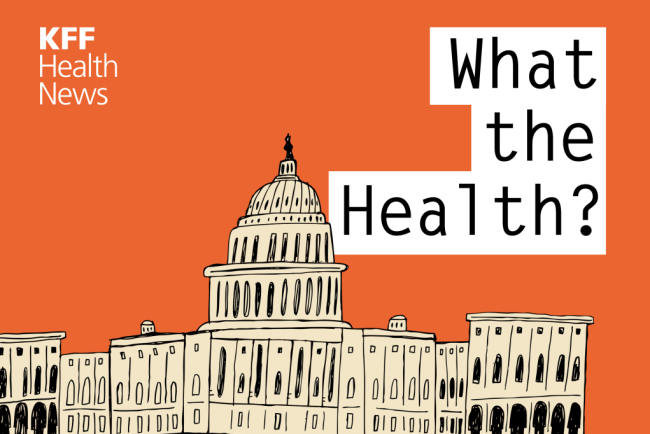
KFF Health News' 'What the Health?': Cutting Medicaid Is Hard — Even for the GOP
The Host Julie Rovner KFF Health News @jrovner @julierovner.bsky.social Read Julie’s stories. Julie Rovner is chief Washington correspondent and host of KFF Health News’ weekly health policy news podcast, “What the Health?” A noted expert on health policy issues, Julie is the author of the […]
Health CareThe Host
Julie Rovner
KFF Health News
Julie Rovner is chief Washington correspondent and host of KFF Health News’ weekly health policy news podcast, “What the Health?” A noted expert on health policy issues, Julie is the author of the critically praised reference book “Health Care Politics and Policy A to Z,” now in its third edition.
After narrowly passing a budget resolution this spring foreshadowing major Medicaid cuts, Republicans in Congress are having trouble agreeing on specific ways to save billions of dollars from a pool of funding that pays for the program without cutting benefits on which millions of Americans rely. Moderates resist changes they say would harm their constituents, while fiscal conservatives say they won’t vote for smaller cuts than those called for in the budget resolution. The fate of President Donald Trump’s “one big, beautiful bill” containing renewed tax cuts and boosted immigration enforcement could hang on a Medicaid deal.
Meanwhile, the Trump administration surprised those on both sides of the abortion debate by agreeing with the Biden administration that a Texas case challenging the FDA’s approval of the abortion pill mifepristone should be dropped. It’s clear the administration’s request is purely technical, though, and has no bearing on whether officials plan to protect the abortion pill’s availability.
This week’s panelists are Julie Rovner of KFF Health News, Anna Edney of Bloomberg News, Maya Goldman of Axios, and Sandhya Raman of CQ Roll Call.
Panelists
Anna Edney
Bloomberg News
Maya Goldman
Axios
Sandhya Raman
CQ Roll Call
Among the takeaways from this week’s episode:
- Congressional Republicans are making halting progress on negotiations over government spending cuts. As hard-line House conservatives push for deeper cuts to the Medicaid program, their GOP colleagues representing districts that heavily depend on Medicaid coverage are pushing back. House Republican leaders are eying a Memorial Day deadline, and key committees are scheduled to review the legislation next week — but first, Republicans need to agree on what that legislation says.
- Trump withdrew his nomination of Janette Nesheiwat for U.S. surgeon general amid accusations she misrepresented her academic credentials and criticism from the far right. In her place, he nominated Casey Means, a physician who is an ally of HHS Secretary Robert F. Kennedy Jr.’s and a prominent advocate of the “Make America Healthy Again” movement.
- The pharmaceutical industry is on alert as Trump prepares to sign an executive order directing agencies to look into “most-favored-nation” pricing, a policy that would set U.S. drug prices to the lowest level paid by similar countries. The president explored that policy during his first administration, and the drug industry sued to stop it. Drugmakers are already on edge over Trump’s plan to impose tariffs on drugs and their ingredients.
- And Kennedy is scheduled to appear before the Senate’s Health, Education, Labor and Pensions Committee next week. The hearing would be the first time the secretary of Health and Human Services has appeared before the HELP Committee since his confirmation hearings — and all eyes are on the committee’s GOP chairman, Sen. Bill Cassidy of Louisiana, a physician who expressed deep concerns at the time, including about Kennedy’s stances on vaccines.
Also this week, Rovner interviews KFF Health News’ Lauren Sausser, who co-reported and co-wrote the latest KFF Health News’ “Bill of the Month” installment, about an unexpected bill for what seemed like preventive care. If you have an outrageous, baffling, or infuriating medical bill you’d like to share with us, you can do that here.
Plus, for “extra credit” the panelists suggest health policy stories they read this week that they think you should read, too:
Julie Rovner: NPR’s “Fired, Rehired, and Fired Again: Some Federal Workers Find They’re Suddenly Uninsured,” by Andrea Hsu.
Maya Goldman: Stat’s “Europe Unveils $565 Million Package To Retain Scientists, and Attract New Ones,” by Andrew Joseph.
Anna Edney: Bloomberg News’ “A Former TV Writer Found a Health-Care Loophole That Threatens To Blow Up Obamacare,” by Zachary R. Mider and Zeke Faux.
Sandhya Raman: The Louisiana Illuminator’s “In the Deep South, Health Care Fights Echo Civil Rights Battles,” by Anna Claire Vollers.
Also mentioned in this week’s podcast:
- ProPublica’s series “Life of the Mother: How Abortion Bans Lead to Preventable Deaths,” by Kavitha Surana, Lizzie Presser, Cassandra Jaramillo, and Stacy Kranitz, and the winner of the 2025 Pulitzer Prize for public service journalism.
- The New York Times’ “G.O.P. Targets a Medicaid Loophole Used by 49 States To Grab Federal Money,” by Margot Sanger-Katz and Sarah Kliff.
- KFF Health News’ “Seeking Spending Cuts, GOP Lawmakers Target a Tax Hospitals Love to Pay,” by Phil Galewitz.
- Axios’ “Out-of-Pocket Drug Spending Hit $98B in 2024: Report,” by Maya Goldman.
Credits
Francis Ying
Audio producer
Emmarie Huetteman
Editor
To hear all our podcasts, click here.
And subscribe to KFF Health News’ “What the Health?” on Spotify, Apple Podcasts, Pocket Casts, or wherever you listen to podcasts.
KFF Health News is a national newsroom that produces in-depth journalism about health issues and is one of the core operating programs at KFF—an independent source of health policy research, polling, and journalism. Learn more about KFF.
USE OUR CONTENT
This story can be republished for free (details).
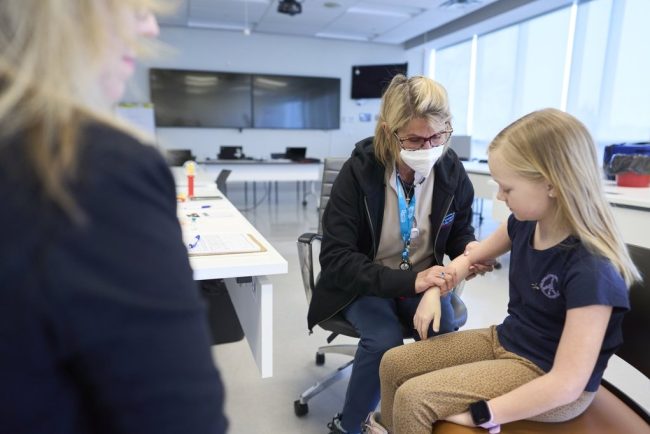
Ontario reports almost 200 new measles cases as virus spreads across Canada
That brings the province’s tally of probable and confirmed cases to 1,440 since an outbreak began in October.
MeaslesThat brings the province’s tally of probable and confirmed cases to 1,440 since an outbreak began in October.

Meet the Florida Group Chipping Away at Public Benefits One State at a Time
PHOENIX — As an Arizona bill to block people from using government aid to buy soda headed to the governor’s desk in April, the nation’s top health official joined Arizona lawmakers in the state Capitol to celebrate its passage. Health and Human Services Secretary Robert […]
Health CarePHOENIX — As an Arizona bill to block people from using government aid to buy soda headed to the governor’s desk in April, the nation’s top health official joined Arizona lawmakers in the state Capitol to celebrate its passage.
Health and Human Services Secretary Robert F. Kennedy Jr. said to applause that the legislation was just the start and that he wanted to prevent federal funding from paying for other unhealthy foods.
“We’re not going to do that overnight,” Kennedy said. “We’re going to do that in the next four years.”
Those words of caution proved prescient when Arizona’s Democratic governor, Katie Hobbs, vetoed the bill a week later. Nevertheless, state legislation to restrict what low-income people can buy using Supplemental Nutrition Assistance Program benefits is gaining momentum, boosted by Kennedy’s touting it as part of his “Make America Healthy Again” platform. At least 14 states have considered bills this year with similar SNAP restrictions on specific unhealthy foods such as candy, with Idaho and Utah passing such legislation as of mid-April.
Healthy food itself isn’t largely a partisan issue, and those who study nutrition tend to agree that reducing the amount of sugary food people eat is a good idea to avoid health consequences such as heart disease. But the question over the government’s role in deciding who can buy what has become political.
The organization largely behind SNAP restriction legislation is the Foundation for Government Accountability, a conservative policy think tank out of Florida, and its affiliated lobbying arm, which has used the name Opportunity Solutions Project.
FGA has worked for more than a decade to reshape the nation’s public assistance programs. That includes SNAP, which federal data shows helps an average of 42 million people afford food each month. It also advocates for ways to cut Medicaid, the federal-state program that connects 71 million people to subsidized health care, including efforts in Idaho and Montana this year.
FGA’s proposals often seek to limit who taps into that aid and the help they receive. Those backing the group’s mission say the goal is to save tax dollars and help people lift themselves out of poverty. Critics argue that FGA’s proposals are a backdoor way to cut off aid to people who need it and that making healthy food and health care more affordable is a better fix.
Now, FGA sees more room for change under the Trump administration and the Kennedy-led health department, calling 2025 a “window of opportunity for major reform,” according to its latest annual report.
A Vision for Limiting Government Benefits
Tarren Bragdon, a former Maine legislator, founded FGA in 2011 to promote policies to “free millions from government dependency and open the doors for them to chase their own American Dream,” he said in a statement on FGA’s website. The main foundation started out as a staff of three with about $60,000 in the bank. As of 2023, it had a budget of more than $15 million and a team of roughly 64, according to the latest available tax documents, and that’s not counting the lobbying arm.
The foundation got early funding from a grant from the State Policy Network, which has long backed right-leaning think tanks with ties to conservative activists including brothers Charles and David Koch.
FGA declined several interview requests for this article.
In recent years, the nonprofit helped draft a 2017 Mississippi law, the Jackson Free Press found, which intensified eligibility checks for public aid that made it more difficult for some applicants to qualify. It successfully pushed a 2023 effort in Idaho to impose work requirements for food benefits that health care advocates said led some recipients to lose access.
The same year, the group helped pass SNAP restrictions affecting eligibility in Iowa. Since those restrictions have taken effect, the Food Bank of Iowa has seen a record number of people show up at its pantries amid rising grocery prices and a scaling back of covid pandemic-era federal support, said Annette Hacker, a vice president at the nonprofit.
Part of the group’s strategy is to pass legislation state by state, with the idea that the crush of new laws will increase pressure on the federal government. For example, states can’t limit what food is purchased through SNAP without federal approval through a waiver process. And in the past, some of FGA’s efforts have stalled because states never got that approval.
Kennedy’s agenda now echoes some of FGA’s key messages, and he has said states can expect approval of their waivers. Meanwhile, congressional leaders are eyeing nationwide Medicaid cuts and work requirements, which FGA considers among its major issues. The foundation also has a connection working inside the administration: Its former policy director, Sam Adolphsen, was tapped to advise President Donald Trump on domestic matters.
“We’re excited to fight from Topeka to Washington, D.C., as opposed to Washington, D.C., to Topeka,” Roy Lenardson, FGA’s state government affairs director, told Kansas lawmakers in February when testifying in support of SNAP legislation there.
Shaping State Policies
In the states, FGA has become known as a conservative “thought leader,” said Brian Colby, vice president of public policy for Missouri Budget Project, a progressive nonprofit that provides analysis of state policy issues.
“Conservatives used to try to chop away at the federal budget,” Colby said. “These guys are doing it at the state level.”
In its 14 years, FGA has created a playbook to shape state policy discussions around public benefits behind the scenes. In Montana, retired Republican legislator Cary Smith, who worked with FGA, said not all of the think tank’s ideas split along party lines.
“They offer a buffet of options,” he said. “Their agenda is making government accountable; it’s in the name.”
He said besides drafting legislation, FGA provides talking points and data to help policymakers support their arguments. “They would go in and would say, ‘This is what Medicaid fraud is costing us,’” Smith said. “That would be the number you’d want to use in your bill.”
In January, FGA released a memo for states to “stop taxpayer-funded junk food.” In February, Stateline reported that Wyoming Republican state Rep. Jacob Wasserburger said the group asked him to sponsor a SNAP restriction bill. The state sponsor of similar legislation in Missouri has repeated at least one of FGA’s talking points, as reported by the Missouri Independent. In Arizona, Republican Rep. Leo Biasiucci, who sponsored the SNAP legislation there, told KFF Health News FGA was behind that bill as well.
Opponents of such bills argue the proposals are not as simple as they sound. Amid debate on a SNAP bill in Montana, Kiera Condon, with the Montana Food Bank Network, testified the legislation would force grocery store workers to sort through what counts as soda or candy, “which could result in retailers not participating in SNAP at all.”
State lawmakers tabled the Montana bill in April.
Montana legislators also easily passed a bill to extend the state’s Medicaid expansion program even after FGA began publishing a series of papers that asserted the program was “breaking” Montana’s budget. FGA had presented data saying most Montanans on the program don’t work, which state data refutes.
Ed Bolen, who leads food aid strategies at the left-leaning Center on Budget and Policy Priorities think tank, said FGA has a pattern of proposing technical changes to existing laws and “unworkable work requirements” that cause people to lose benefits.
After working with policymakers in Kansas for a decade, FGA helped pass legislation that limited how long people can access cash assistance, added work requirements to SNAP, and banned the state from spending federal or state funds to promote public aid. Many of those changes came through 2015 legislation known as the “HOPE Act” drafted by FGA, The Washington Post reported.
Analysis from Kansas Appleseed, an advocacy organization for low-income Kansans, found the SNAP caseload sharply declined after the bill was enacted because of the new hurdles, dropping from 140,000 households in January 2014 to 90,000 as of January 2020.
“It’s death by a thousand cuts,” said Karen Siebert, an adviser for Harvesters, a community food bank network in Kansas and Missouri. “Some of these FGA proposals are such complex policies, it’s hard to argue against and to explain the ripple effects.”
In 2024, the foundation produced more than two dozen videos featuring state politicians from across the nation touting the organization’s goals and dozens of research papers arguing public benefits are wrecking state budgets. FGA also has its own polling team to produce data out of the states it’s working to influence.
The organization released a list of 14 states it labeled as “redder and better” places to exert more influence. That included Idaho, where the group has four registered lobbyists in the state Capitol.
In 2023, FGA helped present and successfully lobby for legislation there to require people receiving food aid to work at least 80 hours a month. The organization called the resulting law “landmark welfare reform” years in the making.
And this year, Idaho lawmakers passed more requirements for people enrolled in Medicaid who can work. FGA staffers worked with one of the co-sponsors of the legislation on a similar bill last year that failed, then again this year. A compromise bill passed with FGA’s backing, marking another victory for the foundation.
David Lehman, a lobbyist for the Idaho Association of Community Providers, which represents health organizations that have opposed FGA bills, said Idaho illustrates how FGA works with sympathetic lawmakers in conservative states to gain more ground.
“They’re pushing an already rolling rock downhill,” he said.
KFF Health News is a national newsroom that produces in-depth journalism about health issues and is one of the core operating programs at KFF—an independent source of health policy research, polling, and journalism. Learn more about KFF.
USE OUR CONTENT
This story can be republished for free (details).
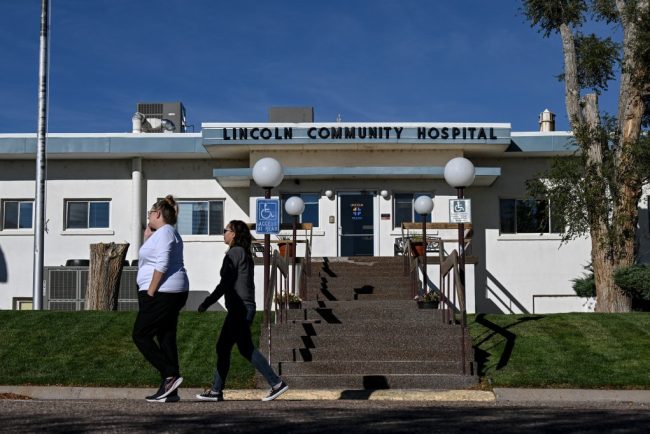
Seeking Spending Cuts, GOP Lawmakers Target a Tax Hospitals Love To Pay
On the eastern plains of Colorado, in a county of less than 6,000 people, Lincoln Health runs the only hospital within a 75-minute drive. The facility struggles financially, given its small size and the area’s tiny population. But for over a decade, the Hugo, Colorado-based […]
Health CareOn the eastern plains of Colorado, in a county of less than 6,000 people, Lincoln Health runs the only hospital within a 75-minute drive. The facility struggles financially, given its small size and the area’s tiny population.
But for over a decade, the Hugo, Colorado-based health system has remained afloat partially thanks to a surprising source: special taxes on the state’s hospitals.
The taxes Lincoln pays help cover the state’s Medicaid costs and — because the federal government matches a portion of what states spend on Medicaid — enable Colorado to claim more federal money. That generally leads to more dollars for the hospital. The tax proceeds also have helped Colorado expand Medicaid under the Affordable Care Act to cover 400,000 more low-income adults, significantly reducing the number of people showing up at hospital doors without insurance.
Last year, Lincoln paid $500,000 in provider taxes but netted more than $3.6 million extra from Medicaid, accounting for about 15% of its budget, said Lincoln CEO Kevin Stansbury.
“These dollars allow me to care for patients who are enrolled in Medicaid and to break even rather than lose money,” he said. “Without them, it would significantly impact our ability to survive.”
Every state except Alaska uses at least one provider tax to boost its federal Medicaid dollars.
But Republicans who control Congress are looking for potential cuts in the nearly $900 billion Medicaid program to help fund an extension of President Donald Trump’s tax cuts — and have sought to portray provider taxes as malicious, sometimes even deriding them as “money laundering.” Lawmakers say they may curtail or eliminate provider taxes as part of legislation to enact Trump’s domestic agenda.
“It’s infuriating,” Stansbury said.
Medicaid and the closely related Children’s Health Insurance Program together cover roughly 79 million low-income and disabled people and are jointly financed by states and the federal government.
Federal dollars match state payments with no limit. While the split varies based on a state’s per capita income, the federal match ranges from 50% to 77% for children, pregnant women, and people with disabilities, who make up most of the enrollment.
States started using provider taxes in the 1980s to help pay their share and gain additional Medicaid funds from the federal government.
Brian Blase, a former Trump health policy adviser who leads the conservative Paragon Health Institute, sees provider taxes as one of the highest forms of waste in Medicaid. States and their hospitals, nursing homes, and other providers aren’t held accountable for how the tax money is used, reducing incentives for states to control Medicaid spending, he said.
“This has been a feature of the program for four decades, and it is a feature that is getting worse,” Blase said.
The Congressional Budget Office estimates eliminating provider taxes would save the federal government more than $600 billion over a decade.
Rep. Brett Guthrie (R-Ky.), who chairs the House committee that oversees Medicaid, has said provider taxes are on the menu for potential cuts.
Other changes Republicans are considering to cut federal Medicaid spending include requiring adult enrollees to prove they’re working as a condition of eligibility, as well as ending higher payments for adults enrolled as part of the Affordable Care Act’s expansion of the program.
Since 2014, more than 20 million nondisabled adults in 40 states and Washington, D.C., have gained coverage under the expansion.
House Republicans have set a Memorial Day deadline to come to an agreement on spending cuts, which would help pay for extending about $4 trillion in tax cuts passed during Trump’s first administration and set to expire at the end of this year.
The Government Accountability Office and the Medicaid and CHIP Payment and Access Commission, a congressional advisory board, have raised concerns about the provider taxes, which effectively saddle federal taxpayers with state expenses. Republican and Democrat presidents have criticized or proposed curtailing the use of Medicaid provider taxes — including Trump in his first term, Barack Obama, and Joe Biden while serving as vice president.
But opposition from hospitals, nursing homes, and states snuffed out any move to limit or end the arrangements.
Colorado and other states often use the money to maintain or increase payments to providers, which are often paid less by Medicaid than by Medicare, the federal program primarily for people 65 or older, or private insurers.
States have added provider taxes to help generate federal money to cope with economic downturns and budget constraints.
Hospitals in Idaho last year began paying an additional provider tax to increase pay to hospitals and home- and community-based providers. The tax came as Idaho’s Republican-controlled legislature sought to add many conditions that threatened to end the state’s Medicaid expansion — which would also eliminate a key source of increased federal funding.
Brian Whitlock, president and CEO of the Idaho Hospital Association, said funding from the hospital tax helps boost Medicaid payments to about 80% of Medicare’s rates instead of 60%.
“We still lose money on every Medicare and Medicaid patient,” he said. “The state recognizes that this money helps offset the losses we take under Medicaid reimbursement.”
While hospitals and nursing homes have been the main beneficiaries of provider tax proceeds, ambulance services have also paid and benefited from Medicaid taxes. States increasingly have also approved Medicaid taxes on private insurers that operate their Medicaid programs to gain more federal funds.
California’s Medicaid managed care tax began in 2009 and is expected to generate nearly $9 billion in net revenue for the 2024-25 fiscal period — or about 5% of the state’s Medicaid budget, according to the California Legislative Analyst’s Office.
In recent years, California has extended full Medicaid coverage to immigrants lacking permanent legal status. Federal law prohibits federal Medicaid dollars from being used to cover people in the country without authorization, but states can use their own money.
At a presentation to congressional staffers in April, Blase cited California’s strategy as an example of provider tax abuse and claimed the state is effectively laundering federal funds to cover people living in the U.S. without authorization.
In practice, the tax has been a kind of fiscal pressure valve generally offsetting state spending. A ballot measure that passed in November now requires that much of the money from California’s tax specifically be used to increase Medicaid reimbursement to doctors, hospitals, and other providers.
Hospital officials and state Medicaid leaders argue the term “money laundering” is an inaccurate way to describe provider taxes, since they are allowed by federal law. But Blase said calling the levies a “tax” is misleading, pointing out that most businesses don’t typically advocate to pay one.
Jamie Whitney, chief legal officer for Texas-based Adelanto HealthCare Ventures, a consulting firm, said that provider taxes are a politically neutral way to help states pay for Medicaid and that curtailing their use would harm them all. “This is not a red-state, blue-state issue,” she said.
Colorado is one of more than a dozen states that have funded an ACA Medicaid expansion using provider tax money. Others include Arkansas, Louisiana, Missouri, North Carolina, Ohio, and Virginia.
Colorado implemented its Medicaid provider tax effort in 2009. In the 2024 fiscal year, about $5 billion of the state’s $15 billion Medicaid program was funded by provider taxes, according to the state.
The money helps the state pay higher Medicaid reimbursements to hospitals, which reduces their need to charge higher rates to private insurers, said Kim Bimestefer, executive director of the Colorado Department of Health Care Policy and Financing, which oversees Medicaid.
Some of the extra payments are dependent on hospitals meeting certain quality and patient-safety metrics, such as reducing readmission rates after patients are discharged — a requirement state officials say improves care for everyone.
The provider taxes also fund a program allowing working residents with disabilities to buy into Medicaid coverage even if their income is as high as 300% of the federal poverty level, or $46,950 for an individual. About 20,000 people are enrolled in the program.
Among them is Alison Sbrana, 31, of Fort Collins, Colorado, who has a type of chronic fatigue syndrome and relies on Medicaid to cover long-term home care.
“It would be devastating if the benefit went away,” said Sbrana, who works as a researcher and activist for those with the same disorder. “I would be forced to stop working to keep my income low enough to qualify.”
The state’s provider taxes also pay for a $60 million fund to support rural hospitals, helping them add telehealth services, recruit surgeons, and hire paramedics, according to a state report.
Konnie Martin, CEO of San Luis Valley Health, a two-hospital system based in Alamosa, Colorado, said her nonprofit paid $5.4 million in provider taxes last year and gained about $15 million in benefits from higher Medicaid payments and the rural grants.
She said the money helps her hospital maintain obstetrical services, so residents don’t have to drive 120 miles to the nearest maternity hospital. Without the birthing center, the entire region would suffer, she said.
“It also would gut the economy of the community, because young people will move away,” she said.
KFF Health News senior correspondent Bernard Wolfson contributed to this report.
KFF Health News is a national newsroom that produces in-depth journalism about health issues and is one of the core operating programs at KFF—an independent source of health policy research, polling, and journalism. Learn more about KFF.
USE OUR CONTENT
This story can be republished for free (details).

If measles keeps spreading, Canada may lose 30-year elimination status: PHAC
Measles is one of the most contagious infectious diseases — more contagious than diseases like COVID-19, influenza and chickenpox.
MeaslesMeasles is one of the most contagious infectious diseases — more contagious than diseases like COVID-19, influenza and chickenpox.
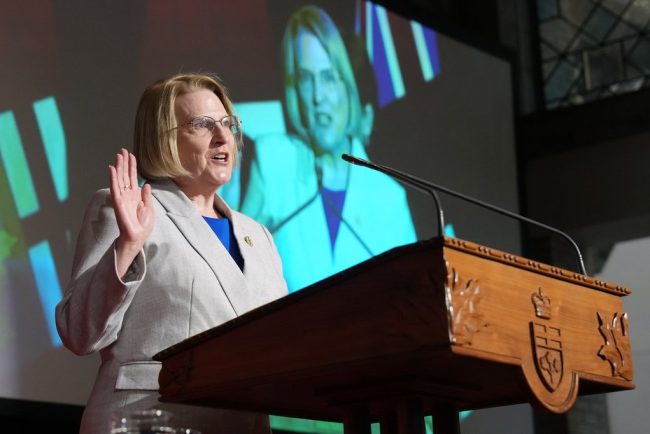
Ontario health minister defends province’s approach amid worsening measles outbreak
Health Minister Sylvia Jones is defending the province’s record against measles as new infections rise sharply.
MeaslesHealth Minister Sylvia Jones is defending the province’s record against measles as new infections rise sharply.

Trump Policies at Odds With ‘Make America Healthy Again’ Push
In his March address to Congress, President Donald Trump honored a Texas boy diagnosed with brain cancer. Amid bipartisan applause, he vowed to drive down childhood cancer rates through his “Make America Healthy Again” initiative. A few days later, the administration quietly dropped a lawsuit […]
Health CareIn his March address to Congress, President Donald Trump honored a Texas boy diagnosed with brain cancer. Amid bipartisan applause, he vowed to drive down childhood cancer rates through his “Make America Healthy Again” initiative.
A few days later, the administration quietly dropped a lawsuit to cut emissions from a Louisiana chemical plant linked to cancer.
At first glance, Trump appears to have fully embraced the MAHA movement championed by Health and Human Services Secretary Robert F. Kennedy Jr. From proclaiming in his congressional speech a goal to “get toxins out of our environment” to launching a new commission to study cancer and other ailments, Trump has vowed to end what he calls an epidemic of chronic disease.
But even as he extols MAHA, Trump has unleashed a slew of policies likely to make Americans less healthy. He’s slashing 20,000 full time positions from HHS and cutting more than $4 billion in indirect costs related to health research grants, including studies into treatment for Alzheimer’s and cancer. He also supported a GOP plan likely to kneecap Medicaid, a joint federal-state program that covers about 72 million Americans.
The contradictions raise doubts about the sincerity of Trump’s support for the MAHA agenda and his administration’s commitment to making a dent in chronic disease — conditions that afflict about 133 million Americans and account for roughly 90% of the $4.5 trillion spent annually in the U.S. on health care.
The administration’s attention to chronic disease is also notable for its lack of focus on expanding health insurance. Research shows people with coverage have lower death rates; insurance provides free or low-cost preventive care that can help manage chronic disease and reduce risks of serious complications.
“The layoffs at HHS, cuts to Medicaid, and reduction in research could all end up resulting in less healthy Americans,” said Larry Levitt, executive vice president for health policy at KFF. “They’re talking about getting at the root causes of chronic disease. Less research and protections will undermine that goal.” KFF is a health information nonprofit that includes KFF Health News.
HHS leaders have said that they focused personnel cuts at agencies on redundant or unnecessary administrative positions. The administration has said the job cuts will save money and make HHS more responsive.
“Streamlining bureaucracy and eliminating redundancies is how we deliver on the mission of Making America Healthy Again — not by preserving a bloated system that’s failed to improve outcomes despite record spending,” HHS spokesperson Vianca Rodriguez Feliciano said in an email.
Public health advocates say the staffing cuts run counter to the promise of a MAHA agenda dedicated to reducing chronic disease.
“HHS declared that their mission is to Make America Healthy Again,” said Sharon Gilmartin, executive director of Safe States Alliance, on a press call. The alliance is a nonprofit focused on preventing injury and violence. “How can we do that when the people who have spent decades of their life combating the health issues of our nation are being tossed out with no notice?”
The HHS workforce reductions decimated divisions focused on chronic disease.
Gone is most of the Centers for Disease Control and Prevention’s population health division, which conducted research and developed public health programs on chronic disease. Gone, too, are staffers at the National Institutes of Health who focused on Alzheimer’s research. After HHS staffers working on Alzheimer’s projects were put on administrative leave, the Alzheimer’s Association sounded the alarm about the cuts, saying in an April 1 statement that the reductions “could cause irreversible damage.”
And gone is the CDC’s Office on Smoking and Health, which worked to protect the public from the harmful effects of tobacco use. The administration also gutted the FDA’s Center for Tobacco Products, which enforces advertising restrictions. Tobacco use is the leading preventable cause of disease, disability, and death in the country.
“Cuts to CDC and FDA tobacco control programs are devastating,” Tom Frieden, who served as director of the CDC from 2009 to 2017, said April 18 on the social media platform Bluesky.
According to administration fact sheets and press releases, the staffing cuts will save $1.8 billion a year and shrink HHS’ workforce from 82,000 to 62,000 full-time employees. HHS will be retooled to focus on “safe, wholesome food, clean water, and the elimination of environmental toxins,” according to a March 27 press statement. The restructuring will improve Americans’ experience with HHS by making the agency more responsive and efficient, the statement said.
Roger Severino, a lawyer who led the HHS Office for Civil Rights during the previous Trump administration, said the job cuts are necessary because the HHS budget has grown while American health has declined.
“If you want to Make America Healthy Again, you have to make HHS healthy again. You have to trim the bureaucratic fat,” said Severino, who is now vice president of domestic policy at the Heritage Foundation, a conservative policy group. “We haven’t seen chronic disease go down or obesity go down, while autism rates are up. If this were a private company, it would have gone bankrupt years ago.”
But many public health experts question how the federal government will be able to respond to existing problems, as well as new health issues, with fewer employees and resources.
Infectious diseases are one area of concern.
Trump, on the first day of his second term in office, withdrew the nation from the World Health Organization, which detects, monitors, and responds to emerging health threats. The U.S. has been the largest financial contributor to the organization.
Without membership, the U.S. may remain in the dark if the WHO identifies an emerging threat that could ultimately spread and become global. Spillover can happen: In 2014, an Ebola outbreak in West Africa led to 11 reported cases in the U.S. The WHO played a central role in developing infection-prevention protocols and provided logistical support to affected countries.
The evisceration of the U.S. Agency for International Development could also leave the nation more vulnerable because the agency worked with countries such as Vietnam on early detection of diseases including bird flu. The agency typically would have aided in the response to a current Ebola outbreak in Uganda, providing support that doctors say helped prevent spread in past outbreaks.
The staffing reductions and frozen or canceled grants are having an immediate impact on the ability to respond to infectious outbreaks. Right now, for instance, Texas is in the throes of a measles outbreak, with more than 500 confirmed cases.
But the administration’s funding cuts forced the Dallas County health department to lay off 11 full-time workers and 10 part-time staffers responsible for responding to such outbreaks, Philip Huang, director and health authority for the Dallas County Health and Human Services Department, said at a press event.
The administration has also imperiled ongoing research, including studies and trials related to chronic disease.
Trump ended hundreds of research projects at the National Institutes of Health totaling more than $2 billion, including projects on HIV prevention drugs and Alzheimer’s disease research.
“Patients enrolled in NIH studies led by Plaintiffs face abrupt cancellations of treatment in which they have invested months of time with no explanation or plan for how to mitigate the harm,” according to a federal lawsuit filed in Massachusetts by scientists and researchers.
The research being cut could potentially have supported Trump’s pledge, when he honored the boy with brain cancer, to drive down rates of the disease. In the weeks since, however, Trump’s administration announced plans to weaken automobile tailpipe emission standards. Trump slashed more than 400 grants to Columbia University, including millions earmarked for a cancer center.
“It’s making people sicker again. Now that would be a more honest bumper sticker,” said Leslie Dach, a former Obama administration official who is the executive chair of Protect Our Care, which advocates for the Affordable Care Act. “They’re stopping research on vaccines and gutting health care programs that keep 100 million Americans healthy. It’s all show. It’s a bunch of junk.”
KFF Health News is a national newsroom that produces in-depth journalism about health issues and is one of the core operating programs at KFF—an independent source of health policy research, polling, and journalism. Learn more about KFF.
USE OUR CONTENT
This story can be republished for free (details).









